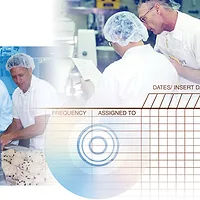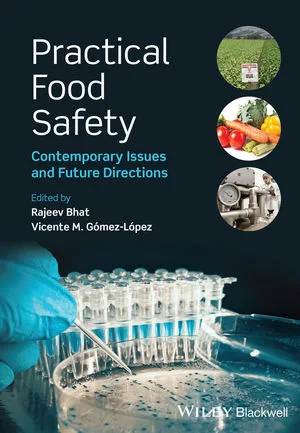10 Reasons Why You Should Be Using Chlorine Dioxide
Chlorine dioxide is one powerhouse sanitizer that is getting more attention recently as food processors look for more efficacious products to help them win the sanitation battle. Approved by the U.S. Food and Drug Administration (FDA) and the U.S. Environmental Protection Agency (EPA), it is as powerful as peracetic acid and more economical, yet it has far less of an impact on the environment than quaternary ammonium salts, chlorine or bromine, making it an excellent choice for food processing plants. It costs about the same to use as other sanitizers but is more versatile and less harmful. It’s also been shown to destroy and prevent biofilms, one of the biggest challenges to food processors in destroying harmful bacteria. It also does not have the strong odor or corrosive qualities associated with chlorine.
It is a versatile alternative that can be used in many sanitation applications, including pasteurization equipment, heat exchangers, cooling towers, hard surface disinfecting, potable water treatment and deodorizing stacks in rendering plants. It is already growing in popularity as a tool to control microbiological growth in the dairy industry, the beverage industry, the fruit and vegetable processing industries, canning plants, and in poultry and beef facilities.
“Everybody in the food processing industry is looking for better cleaning and sanitation processes,” says Fred Holzhauer, Director of Business Development with Birko Corp., a leading specialty chemical manufacturer that provides a product line of more than 200 cleaning and sanitizing chemicals and application equipment to the meat, poultry, microbrewery and food industries.
“Chlorine dioxide eliminates sources and transfers of harmful pathogens in the food plant and attacks biofilms that form on equipment and other food-contact surfaces—all while doing less harm to the environment than other choices that do not have comparable strength.” Chlorine dioxide is the answer, says Holzhauer. Here are 10 reasons why:
- Chlorine dioxide has 2.6 times the oxidizing power of waterborne chlorine (from bleach), giving it a wide spectrum of sanitizing uses and making it extraordinarily effective against a host of bugs. Studies have shown that it produces as high as a 6-log reduction.
- Chlorine dioxide has a much wider pH spectrum than chlorine, making it more versatile and forgiving in a variety of application situations. Unlike chlorine, chlorine dioxide remains a true gas dissolved in solution. The lack of any significant reaction of chlorine dioxide with water is partly responsible for its ability to retain its biocidal effectiveness over a wide pH range. It also has limited reactions with organics, indicating that much more of the chlorine dioxide added to a system is available as a biocidal agent, and is not consumed to the degree that chlorine would be under the same circumstances. In addition, chlorine will react with, and be consumed by ammonia or any amine, while chlorine dioxide reacts very slowly with secondary amines, and sparingly with primary amines or ammonia.
- Chlorine dioxide is registered with EPA (Registration No. 74986-1), and is considered an excellent bactericide, fungicide and antimicrobial agent. It has passed the EPA’s stringent DIS/TISS guidelines for use as a disinfectant and as a food-contact surface sanitizer.
- The FDA and the U.S. Department of Agriculture (USDA) have approved stabilized sodium chlorite (a precursor) and chlorine dioxide in food processing plants for sanitizing and controlling bacteria and mold.
- Chlorine dioxide is currently under EPA review as a surface sanitizer for E. coli O157:H7 and drug-resistant Salmonella. It is also currently under EPA review as a viricide for HIV and Hepatitis A and for use as a fungicide, viricide, and algaecide.
- Chlorine dioxide has been found to be one of the most effective tools for dispersing biofilms, and in some cases, inhibiting the formation of future biofilms. This function is especially valuable in the small cooling towers of food processing facilities where food product contamination can contribute to heavy films or algal slimes. Biofilm is a polysaccharide film or coating that protects and harbors viable bacteria colonies making surfaces more difficult to clean and disinfect.
- Chlorine dioxide can be used on food-contact surfaces at diluted concentrations as low as 5 parts-per-million (ppm). In some cases, the compound has demonstrated a rapid kill of bacteria much less than the 30-minute period typically used in disinfection studies. Because it is so powerful in such small amounts, it is also extremely economical.
- So far, problem cells have shown little ability to develop resistance to chlorine dioxide, as they can with other sanitizers, making it a consistent tool in the sanitation toolbox.
- Chlorine dioxide generating systems can be used for odor control, sanitation and water purification applications. Birko Corp. offers an exclusive ClO2 generation system, which eliminates older, conventional “vacuum draw” technology, for outstanding consistency, accuracy and practical yield.
- Unlike chlorine bleach and bromide, which make carcinogenic trihalomethanes that get washed down the drain and deposited in the environment, chlorine dioxide donates oxygen, breaking down to water, oxygen and common table salt. This makes it much less corrosive to equipment and a superb environmental choice. It also breaks down quickly, which means it won’t harm the soil or add toxic deposits to the ground.
“Chlorine dioxide has such a wide spectrum of uses,” Holzhauer says. “It’s got amazing firepower, it’s economical, and its environmental profile is safer than other choices. There’s nothing else out there that can compete.”
Birko: www.birko.com
Looking for quick answers on food safety topics?
Try Ask FSM, our new smart AI search tool.
Ask FSM →








